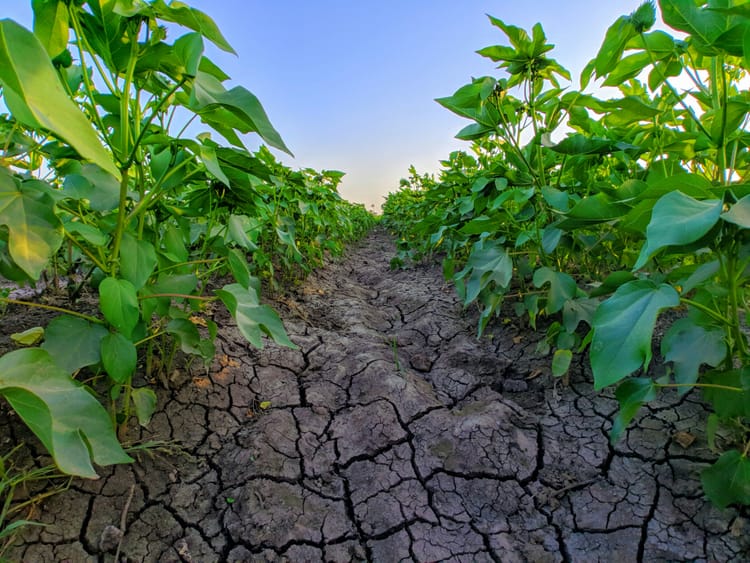What CSOs should know about the new GRI climate standards

The Global Reporting Initiative (GRI) has opened a three-month public consultation on the upcoming update of its climate change and energy disclosure standards. Chief Sustainability Officers now have a chance to review and comment on the draft – and start preparing for the changes ahead.
The GRI is behind the most widely used standards around sustainability disclosures – most of which were published in 2016. Since then, the regulatory environment around climate change has evolved significantly, so the organisation is proposing a raft of revisions to align with the latest developments.
Among other topics, the new standards would require companies’ sustainability teams to report in a much more granular fashion on the social impacts of their climate efforts, their use of carbon credits and removals, and the investments allocated to mitigation and adaptation.
The proposed revisions would create a new climate change standard and overhaul existing standards, including GRI 305 on emissions disclosures, GRI 302 on energy, and GRI 201 on economic performance. They are expected to come into force in early 2025 – with the public consultation running until February 29, 2024.
Just transition: a new GRI priority
The climate change standard draft introduces a new GRI focus on the topic of a just transition – meaning companies will soon be required to prove that their climate transition plans are fair and inclusive, create decent work opportunities and leave no one behind.
For the first time, it includes a dedicated disclosure on just transition metrics such as the number of jobs created, eliminated, and redeployed due to the company’s climate transition plan, the number of employees that received upskilling or reskilling training, and the locations where transition plans have impacts on local communities and Indigenous Peoples.
But the emphasis on just transition goes beyond this new disclosure, and seeps through other requirements to disclose organisations’ impact on workers, local communities and vulnerable groups associated with the transition and adaptation plans.
Social impacts are also a consideration of two other new GRI disclosure requirements around the use of greenhouse gas removals and carbon credits.
Increased transparency around carbon credits and removals
Among other new requirements, the draft includes two new disclosures regarding the use of GHG removals and carbon credits.
Carbon removals encompass both nature-based solutions such as forest management and human-made technologies such as direct air capture, as long as they store carbon “permanently” – which is generally interpreted as at least 100 years.
They have been identified as a promising decarbonisation solution, with tech giants like Stripe, Alphabet, Shopify and Meta committing to buy an initial US$1 billion of permanent carbon removals by 2030.
The EU recently approved a Carbon Removal Certification Framework to set a minimum quality threshold for removal projects. And now under the new GRI climate change standard, companies will have to account and report the total removals applied in their value chains, how quality criteria are monitored, and the intended use of these removals (ie, for offsetting or other uses).
When it comes to carbon credits, GRI is following the lead of carbon market integrity efforts such as VCMI and ICVCM, and introducing a disclosure requirement that includes the total amount of carbon credits cancelled, information on the projects that issued the credits from, and “adherence to quality criteria”.
For both carbon removals and carbon credits, organisations will also be expected to report on how they monitor the impacts of these activities on local communities, vulnerable groups, workers and biodiversity – reflecting GRI’s new commitment to encouraging a just transition.
GHG emissions: Mandatory inclusion of all Scope 3 categories
In terms of GHG emissions disclosures, the GRI draft proposes much more granular reporting requirements, including a breakdown of all greenhouse gases accounted within Scopes 1 and 2, and the mandatory disclosure of emissions in all 15 upstream and downstream Scope 3 categories.
Companies will also be required to explain how their reduction targets align with the latest scientific evidence, and disclose their target revision policies, the base year they have set, and any recalculations of base year emissions.
As they report on their progress towards emissions reduction targets, organisations that wish to comply with this new GRI standard will be expected to be transparent about how this progress was achieved, “including whether it is due to the organisation’s initiatives, secondary effects due to other initiatives carried out by the organisation, or changes due to external factors”.
Climate transition and adaptation plans (and investments)
Finally, the draft includes a new management disclosure focused on the development of a transition plan for climate change mitigation – as well as adaptation.
Sustainability investments within companies are already shifting towards adaptation as a result of accelerating extreme climate events, and this new requirement will help them assess the true impact of their adaptation strategies.
As well as any impacts associated with climate change-related risks and opportunities identified to inform the development of the adaptation plan, they will have to disclose details on policies and actions, the scenarios used for its development, and information on the investments allocated to its implementation.
This last item is likely to be met with resistance: the Chair of the Securities and Exchange Commission, Gary Gensler, recently noted that among all the provisions of the commission’s proposed climate disclosure rule, the most opposed measure is its requirement to report on investments made to manage climate transition risks.







Member discussion